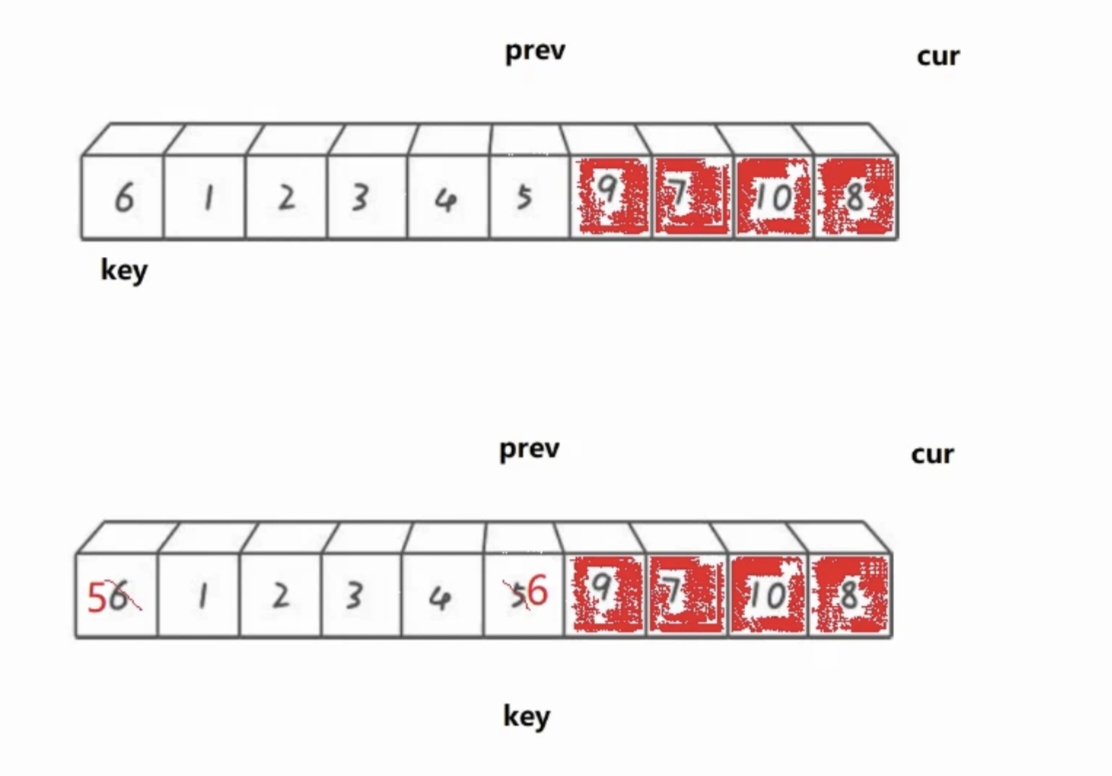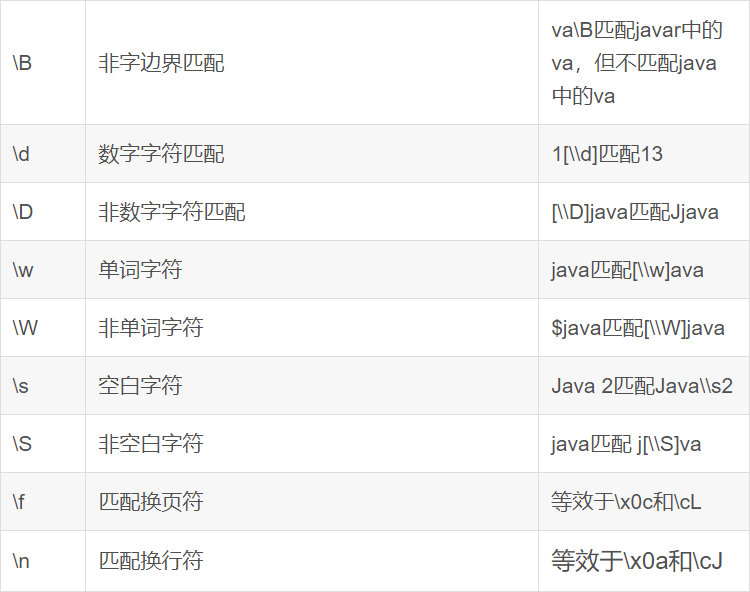1) 贪心例子
称之为贪心算法或贪婪算法,核心思想是
- 将寻找最优解的问题分为若干个步骤
- 每一步骤都采用贪心原则,选取当前最优解
- 因为没有考虑所有可能,局部最优的堆叠不一定让最终解最优
贪心算法是一种在每一步选择中都采取在当前状态下最好或最优(即最有利)的选择,从而希望导致结果是最好或最优的算法。这种算法通常用于求解优化问题,如最小生成树、背包问题等。
贪心算法的应用:
- 背包问题:给定一组物品和一个背包,每个物品有一定的重量和价值,要求在不超过背包容量的情况下,尽可能多地装入物品。
- 活动选择问题:在一个活动集合中,每次只能参加一个活动,问如何安排时间以最大化所有活动的收益。
- 编辑距离问题:给定两个字符串,求它们之间的最小编辑距离(即将一个字符串转换为另一个字符串所需的最少操作次数)。
- 网络流问题:给定一张有向图和一些起点和终点,求最大流量。
- 找零问题:给定一定数量的硬币和需要找零的金额,求使用最少的硬币数。
常见问题及解答:
- 贪心算法一定会找到最优解吗?
答:不一定。贪心算法只保证在每一步选择中都是最优的,但并不能保证整个问题的最优解。例如,背包问题中的贪心算法可能会导致最后一个物品没有被装入背包。 - 如何判断一个问题是否适合用贪心算法解决?
答:一个问题如果可以用递归的方式分解成若干个子问题,且每个子问题都有明确的最优解(即局部最优),那么这个问题就可以用贪心算法解决。 - 贪心算法的时间复杂度是多少?
答:贪心算法的时间复杂度取决于问题的规模和具体实现。一般来说,对于规模较小的问题,贪心算法的时间复杂度可以达到O(nlogn)或O(n2);对于规模较大的问题,可能需要O(n3)或更高。
几个贪心的例子
Dijkstra
// ...
while (!list.isEmpty()) {
// 选取当前【距离最小】的顶点
Vertex curr = chooseMinDistVertex(list);
// 更新当前顶点邻居距离
updateNeighboursDist(curr);
// 移除当前顶点
list.remove(curr);
// 标记当前顶点已经处理过
curr.visited = true;
}
- 没找到最短路径的例子:负边存在时,可能得不到正确解
- 问题出在贪心的原则会认为本次已经找到了该顶点的最短路径,下次不会再处理它(curr.visited = true)
- 与之对比,Bellman-Ford 并没有考虑局部距离最小的顶点,而是每次都处理所有边,所以不会出错,当然效率不如 Dijkstra
Prim
// ...
while (!list.isEmpty()) {
// 选取当前【距离最小】的顶点
Vertex curr = chooseMinDistVertex(list);
// 更新当前顶点邻居距离
updateNeighboursDist(curr);
// 移除当前顶点
list.remove(curr);
// 标记当前顶点已经处理过
curr.visited = true;
}
Kruskal
// ...
while (list.size() < size - 1) {
// 选取当前【距离最短】的边
Edge poll = queue.poll();
// 判断两个集合是否相交
int i = set.find(poll.start);
int j = set.find(poll.end);
if (i != j) { // 未相交
list.add(poll);
set.union(i, j); // 相交
}
}
其它贪心的例子
-
选择排序、堆排序
-
拓扑排序
-
并查集合中的 union by size 和 union by height
-
哈夫曼编码
-
钱币找零,英文搜索关键字
- change-making problem
- find Minimum number of Coins
-
任务编排
-
求复杂问题的近似解
2) 零钱兑换问题
有几个解(零钱兑换 II)Leetcode 518
public class Leetcode518 {
public int change(int[] coins, int amount) {
return rec(0, coins, amount, new LinkedList<>(), true);
}
/**
* 求凑成剩余金额的解的个数
*
* @param index 当前硬币索引
* @param coins 硬币面值数组
* @param remainder 剩余金额
* @param stack -
* @param first -
* @return 解的个数
*/
public int rec(int index, int[] coins, int remainder, LinkedList<Integer> stack, boolean first) {
if(!first) {
stack.push(coins[index]);
}
// 情况1:剩余金额 < 0 - 无解
int count = 0;
if (remainder < 0) {
print("无解:", stack);
}
// 情况2:剩余金额 == 0 - 有解
else if (remainder == 0) {
print("有解:", stack);
count = 1;
}
// 情况3:剩余金额 > 0 - 继续递归
else {
for (int i = index; i < coins.length; i++) {
count += rec(i, coins, remainder - coins[i], stack, false);
}
}
if (!stack.isEmpty()) {
stack.pop();
}
return count;
}
private static void print(String prompt, LinkedList<Integer> stack) {
ArrayList<Integer> print = new ArrayList<>();
ListIterator<Integer> iterator = stack.listIterator(stack.size());
while (iterator.hasPrevious()) {
print.add(iterator.previous());
}
System.out.println(prompt + print);
}
public static void main(String[] args) {
Leetcode518 leetcode = new Leetcode518();
// int count = leetcode.coinChange(new int[]{1, 5, 10, 25}, 41);
// int count = leetcode.coinChange(new int[]{25, 10, 5, 1}, 41);
// int count = leetcode.coinChange(new int[]{5, 2, 1}, 5);
// int count = leetcode.coinChange(new int[]{1, 2, 5}, 5);
int count = leetcode.change(new int[]{15, 10, 1}, 21);
System.out.println(count);
}
}
最优解(零钱兑换)- 穷举法 Leetcode 322
public class Leetcode322 {
static int min = -1; // 需要的最少硬币数 2 3
public int coinChange(int[] coins, int amount) {
rec(0, coins, amount, new AtomicInteger(-1), new LinkedList<>(), true);
return min;
}
// count 代表某一组合 钱币的总数
public void rec(int index, int[] coins, int remainder, AtomicInteger count, LinkedList<Integer> stack, boolean first) {
if (!first) {
stack.push(coins[index]);
}
count.incrementAndGet(); // count++
if (remainder == 0) {
System.out.println(stack);
if (min == -1) {
min = count.get();
} else {
min = Integer.min(min, count.get());
}
} else if (remainder > 0) {
for (int i = index; i < coins.length; i++) {
rec(i, coins, remainder - coins[i], count, stack, false);
}
}
count.decrementAndGet(); // count--
if (!stack.isEmpty()) {
stack.pop();
}
}
public static void main(String[] args) {
Leetcode322 leetcode = new Leetcode322();
// int count = leetcode.coinChange(new int[]{5, 2, 1}, 5);
int count = leetcode.coinChange(new int[]{25, 10, 5, 1}, 41);
// int count = leetcode.coinChange(new int[]{2}, 3);
// int count = leetcode.coinChange(new int[]{15, 10, 1}, 21);
System.out.println(count);
}
}
最优解(零钱兑换)- 贪心法 Leetcode 322
public class Leetcode322 {
public int coinChange(int[] coins, int amount) {
int remainder = amount;
int count = 0;
for (int coin : coins) {
while (remainder - coin > 0) {
remainder -= coin;
count++;
}
if (remainder - coin == 0) {
remainder = 0;
count++;
break;
}
}
if (remainder > 0) {
return -1;
} else {
return count;
}
}
public static void main(String[] args) {
Leetcode322 leetcode = new Leetcode322();
int count = leetcode.coinChange(new int[]{5, 2, 1}, 5);
// int count = leetcode.coinChange(new int[]{25, 10, 5, 1}, 41);
// int count = leetcode.coinChange(new int[]{2}, 3);
// 问题1 没有回头,导致找到更差的解
// int count = leetcode.coinChange(new int[]{15, 10, 1}, 21);
// 问题2 没有回头,导致无解
// int count = leetcode.coinChange(new int[]{15, 10}, 20);
System.out.println(count);
}
}
3) Huffman 编码问题
问题引入
什么是编码?
简单说就是建立【字符】到【数字】的对应关系,如下面大家熟知的 ASC II 编码表,例如,可以查表得知字符【a】对应的数字是十六进制数【0x61】
| \ | 00 | 01 | 02 | 03 | 04 | 05 | 06 | 07 | 08 | 09 | 0a | 0b | 0c | 0d | 0e | 0f |
|---|---|---|---|---|---|---|---|---|---|---|---|---|---|---|---|---|
| 0000 | 00 | 01 | 02 | 03 | 04 | 05 | 06 | 07 | 08 | 09 | 0a | 0b | 0c | 0d | 0e | 0f |
| 0010 | 10 | 11 | 12 | 13 | 14 | 15 | 16 | 17 | 18 | 19 | 1a | 1b | 1c | 1d | 1e | 1f |
| 0020 | 20 | ! | " | # | $ | % | & | ’ | ( | ) | * | + | , | - | . | / |
| 0030 | 0 | 1 | 2 | 3 | 4 | 5 | 6 | 7 | 8 | 9 | : | ; | < | = | > | ? |
| 0040 | @ | A | B | C | D | E | F | G | H | I | J | K | L | M | N | O |
| 0050 | P | Q | R | S | T | U | V | W | X | Y | Z | [ | \ | ] | ^ | _ |
| 0060 | ` | a | b | c | d | e | f | g | h | i | j | k | l | m | n | o |
| 0070 | p | q | r | s | t | u | v | w | x | y | z | { | | | } | ~ | 7f |
注:一些直接以十六进制数字标识的是那些不可打印字符
传输时的编码
- java 中每个 char 对应的数字会占用固定长度 2 个字节
- 如果在传输中仍采用上述规则,传递 abbccccccc 这 10 个字符
- 实际的字节为 0061006200620063006300630063006300630063(16进制表示)
- 总共 20 个字节,不经济
现在希望找到一种最节省字节的传输方式,怎么办?
假设传输的字符中只包含 a,b,c 这 3 个字符,有同学重新设计一张二进制编码表,见下图
- 0 表示 a
- 1 表示 b
- 10 表示 c
现在还是传递 abbccccccc 这 10 个字符
- 实际的字节为 01110101010101010 (二进制表示)
- 总共需要 17 bits,也就是 2 个字节多一点,行不行?
不行,因为解码会出现问题,因为 10 会被错误的解码成 ba,而不是 c
- 解码后结果为 abbbababababababa,是错误的
怎么解决?必须保证编码后的二进制数字,要能区分它们的前缀(prefix-free)
用满二叉树结构编码,可以确保前缀不重复

- 向左走 0,向右走 1
- 走到叶子字符,累计起来的 0 和 1 就是该字符的二进制编码
再来试一遍
- a 的编码 0
- b 的编码 10
- c 的编码 11
现在还是传递 abbccccccc 这 10 个字符
- 实际的字节为 0101011111111111111(二进制表示)
- 总共需要 19 bits,也是 2 个字节多一点,并且解码没有问题了,行不行?
这回解码没问题了,但并非最少字节,因为 c 的出现频率高(7 次)a 的出现频率低(1 次),因此出现频率高的字符编码成短数字更经济
考察下面的树

- 00 表示 a
- 01 表示 b
- 1 表示 c
现在还是传递 abbccccccc 这 10 个字符
- 实际的字节为 000101 1111111 (二进制表示)
- 总共需要 13 bits,这棵树就称之为 Huffman 树
- 根据 Huffman 树对字符和数字进行编解码,就是 Huffman 编解码
Huffman 树
public class HuffmanTree {
/*
Huffman 树的构建过程
1. 将统计了出现频率的字符,放入优先级队列
2. 每次出队两个频次最低的元素,给它俩找个爹
3. 把爹重新放入队列,重复 2~3
4. 当队列只剩一个元素时,Huffman 树构建完成
*/
static class Node {
Character ch; // 字符
int freq; // 频次
Node left;
Node right;
String code; // 编码
public Node(Character ch) {
this.ch = ch;
}
public Node(int freq, Node left, Node right) {
this.freq = freq;
this.left = left;
this.right = right;
}
int freq() {
return freq;
}
boolean isLeaf() {
return left == null;
}
@Override
public String toString() {
return "Node{" +
"ch=" + ch +
", freq=" + freq +
'}';
}
}
String str;
Map<Character, Node> map = new HashMap<>();
public HuffmanTree(String str) {
this.str = str;
// 功能1:统计频率
char[] chars = str.toCharArray();
for (char c : chars) {
/*if (!map.containsKey(c)) {
map.put(c, new Node(c));
}
Node node = map.get(c);
node.freq++;*/
Node node = map.computeIfAbsent(c, Node::new);
node.freq++;
}
// 功能2: 构造树
PriorityQueue<Node> queue = new PriorityQueue<>(Comparator.comparingInt(Node::freq));
queue.addAll(map.values());
while (queue.size() >= 2) {
Node x = queue.poll();
Node y = queue.poll();
int freq = x.freq + y.freq;
queue.offer(new Node(freq, x, y));
}
Node root = queue.poll();
// 功能3:计算每个字符的编码, 功能4:字符串编码后占用 bits
int sum = dfs(root, new StringBuilder());
for (Node node : map.values()) {
System.out.println(node + " " + node.code);
}
System.out.println("总共会占用 bits:" + sum);
}
private int dfs(Node node, StringBuilder code) {
int sum = 0;
if (node.isLeaf()) {
node.code = code.toString();
sum = node.freq * code.length();
} else {
sum += dfs(node.left, code.append("0"));
sum += dfs(node.right, code.append("1"));
}
if (code.length() > 0) {
code.deleteCharAt(code.length() - 1);
}
return sum;
}
public static void main(String[] args) {
new HuffmanTree("abbccccccc");
}
}
注意
- Node::new 是一个 Function,根据 key(即字符)生成 Node 对象
- 对应的是 public Node(Character ch) 有参构造
Huffman 编解码
补充两个方法,注意为了简单期间用了编解码都用字符串演示,实际应该按 bits 编解码
public class HuffmanTree {
// ...
// 编码
public String encode() {
char[] chars = str.toCharArray();
StringBuilder sb = new StringBuilder();
for (char c : chars) {
sb.append(map.get(c).code);
}
return sb.toString();
}
// 解码
public String decode(String str) {
/*
从根节点,寻找数字对应的字符
数字是 0 向左走
数字是 1 向右走
如果没走到头,每走一步数字的索引 i++
走到头就可以找到解码字符,再将 node 重置为根节点
*/
char[] chars = str.toCharArray();
int i = 0;
StringBuilder sb = new StringBuilder();
Node node = root;
while (i < chars.length) {
if (!node.isLeaf()) { // 非叶子
if(chars[i] == '0') { // 向左走
node = node.left;
} else if(chars[i] == '1') { // 向右走
node = node.right;
}
i++;
}
if (node.isLeaf()) {
sb.append(node.ch);
node = root;
}
}
return sb.toString();
}
@SuppressWarnings("all")
public static void main(String[] args) {
HuffmanTree tree = new HuffmanTree("abbccccccc");
String encoded = tree.encode();
System.out.println(encoded);
System.out.println(tree.decode(encoded));
}
}
注意
- 循环中非叶子节点 i 要自增,但叶子节点 i 暂不自增
- 第一个非叶子的 if 判断结束后,仍需要第二个叶子的 if 判断,因为在第一个 if 内 node 发生了变化
相关题目
| 题目编号 | 题目标题 | 算法思路 |
|---|---|---|
| 1167(Plus 题目) | 连接棒材的最低费用 | Huffman 树、贪心 |
参考解答
/**
* <h3>连接棒材的最低费用</h3>
* <p>为了装修新房,你需要加工一些长度为正整数的棒材。如果要将长度分别为 X 和 Y 的两根棒材连接在一起,你需要支付 X + Y 的费用。 返回讲所有棒材连成一根所需要的最低费用。</p>
*/
public class Leetcode1167 {
/*
举例 棒材为 [1,8,3,5]
如果以如下顺序连接(非最优)
- 1+8=9
- 9+3=12
- 12+5=17
总费用为 9+12+17=38
如果以如下顺序连接(最优)
- 1+3=4
- 4+5=9
- 8+9=17
总费用为 4+9+17=30
*/
int connectSticks(int[] sticks) {
PriorityQueue<Integer> queue = new PriorityQueue<>();
for (int stick : sticks) {
queue.offer(stick);
}
int sum = 0;
while (queue.size() >= 2) {
Integer x = queue.poll();
Integer y = queue.poll();
int c = x + y;
sum += c;
queue.offer(c);
}
return sum;
}
public static void main(String[] args) {
Leetcode1167 leetcode = new Leetcode1167();
System.out.println(leetcode.connectSticks(new int[]{1, 8, 3, 5})); // 30
System.out.println(leetcode.connectSticks(new int[]{2, 4, 3})); // 14
}
}
4) 活动选择问题
public class ActivitySelectionProblem {
/*
要在一个会议室举办 n 个活动
- 每个活动有它们各自的起始和结束时间
- 找出在时间上互不冲突的活动组合,能够最充分利用会议室(举办的活动次数最多)
例1
0 1 2 3 4 5 6 7 8 9
|-------)
|-------)
|-------)
例2
0 1 2 3 4 5 6 7 8 9
|---)
|---)
|-----------------------)
|-------)
|---)
|---------------)
几种贪心策略
1. 优先选择持续时间最短的活动
0 1 2 3 4 5 6 7 8 9
|---------------)
|-------)
|---------------)
2. 优先选择冲突最少的活动
0 1 2 3 4 5 6 7 8 9
|-------) 3
|-------) 4
|-------) 4
|-------) 4
|-------) 4
|-------) 2
|-----------) 4
|-------) 4
|-------) 4
|-------) 4
|-------) 3
3. 优先选择最先开始的活动
0 1 2 3 4 5 6 7 8 9
|-----------------------------------)
|---)
|---)
|---)
4. 优先选择最后结束的活动
*/
static class Activity {
int index;
int start;
int finish;
public Activity(int index, int start, int finish) {
this.index = index;
this.start = start;
this.finish = finish;
}
@Override
public String toString() {
return "Activity(" + index + ")";
}
}
public static void main(String[] args) {
Activity[] activities = new Activity[]{
new Activity(0, 1, 3),
new Activity(1, 2, 4),
new Activity(2, 3, 5)
};
// Activity[] activities = new Activity[]{
// new Activity(0, 1, 2),
// new Activity(1, 3, 4),
// new Activity(2, 0, 6),
// new Activity(3, 5, 7),
// new Activity(4, 8, 9),
// new Activity(5, 5, 9)
// };
select(activities, activities.length);
}
public static void select(Activity[] activities, int n) {
List<Activity> result = new ArrayList<>();
int i, j;
i = 0;
result.add(activities[i]);
for (j = 1; j < n; j++) {
if (activities[j].start >= activities[i].finish) {
result.add(activities[j]);
i = j;
}
}
System.out.println(result);
}
}
无重叠区间-Leetcode 435
| 题目编号 | 题目标题 | 算法思路 |
|---|---|---|
| 435 | 无重叠区间 | 贪心 |
参考解答
// 下面代码为 Leetcode 435 题解
public int eraseOverlapIntervals(int[][] intervals) {
Arrays.sort(intervals, Comparator.comparingInt(a -> a[1]));
int i, j;
i = 0;
int count = 1;
for (j = 1; j < intervals.length; j++) {
if (intervals[j][0] >= intervals[i][1]) {
i = j;
count++;
}
}
return intervals.length - count;
}
- 找到不重叠的最多的活动数(count),即活动选择问题原始需求
- 在此基础上,活动总数 - count,就是题目要的排除数量
5) 分数背包问题
贪心法
public class FractionalKnapsackProblem {
/*
1. n个物品都是液体,有重量和价值
2. 现在你要取走 10升 的液体
3. 每次可以不拿,全拿,或拿一部分,问最高价值是多少
编号 重量(升) 价值
0 4 24 水
1 8 160 牛奶 选中 7/8
2 2 4000 五粮液 选中
3 6 108 可乐
4 1 4000 茅台 选中
8140
简化起见,给出的数据都是【价值/重量】能够整除,避免计算结果中出现小数,增加心算难度
*/
static class Item {
int index;
int weight;
int value;
public Item(int index, int weight, int value) {
this.index = index;
this.weight = weight;
this.value = value;
}
int unitPrice() {
return value / weight;
}
@Override
public String toString() {
return "Item(" + index + ")";
}
}
public static void main(String[] args) {
Item[] items = new Item[]{
new Item(0, 4, 24),
new Item(1, 8, 160),
new Item(2, 2, 4000),
new Item(3, 6, 108),
new Item(4, 1, 4000),
};
select(items, 10);
}
static void select(Item[] items, int total) {
Arrays.sort(items, Comparator.comparingInt(Item::unitPrice).reversed());
int remainder = total;
int max = 0;
for (Item item : items) {
if (remainder - item.weight > 0) {
max += item.value;
remainder -= item.weight;
} else {
max += remainder * item.unitPrice();
break;
}
}
System.out.println("最高价值为:" + max);
}
}
6) 0-1 背包问题
贪心法
可能得不到最优解
public class KnapsackProblem {
/*
1. n个物品都是固体,有重量和价值
2. 现在你要取走不超过 10克 的物品
3. 每次可以不拿或全拿,问最高价值是多少
编号 重量(g) 价值(元)
0 1 1_000_000 钻戒一枚
1 4 1600 黄金一块
2 8 2400 红宝石戒指一枚
3 5 30 白银一块
*/
static class Item {
int index;
int weight;
int value;
public Item(int index, int weight, int value) {
this.index = index;
this.weight = weight;
this.value = value;
}
public int unitValue() {
return value / weight;
}
@Override
public String toString() {
return "Item(" + index + ")";
}
}
public static void main(String[] args) {
Item[] items = new Item[]{
new Item(0, 1, 1_000_000),
new Item(1, 4, 1600),
new Item(2, 8, 2400),
new Item(3, 5, 30)
};
select(items, 10);
}
static void select(Item[] items, int total) {
Arrays.sort(items, Comparator.comparingInt(Item::unitValue).reversed());
int max = 0; // 最大价值
for (Item item : items) {
System.out.println(item);
if (total >= item.weight) { // 可以拿完
total -= item.weight;
max += item.value;
} else { // 拿不完
// max += total * item.unitValue();
// break;
}
}
System.out.println("最大价值是:" + max);
}
}
贪心算法的局限
| 问题名称 | 是否能用贪心得到最优解 | 替换解法 |
|---|---|---|
| Dijkstra(不存在负边) | ✔️ | |
| Dijkstra(存在负边) | ❌ | Bellman-Ford |
| Prim | ✔️ | |
| Kruskal | ✔️ | |
| 零钱兑换 | ❌ | 动态规划 |
| Huffman 树 | ✔️ | |
| 活动选择问题 | ✔️ | |
| 分数背包问题 | ✔️ | |
| 0-1 背包问题 | ❌ | 动态规划 |
7) Set cover problem
集合覆盖问题
本文,已收录于,我的技术网站 pottercoding.cn,有大厂完整面经,工作技术,架构师成长之路,等经验分享!



















